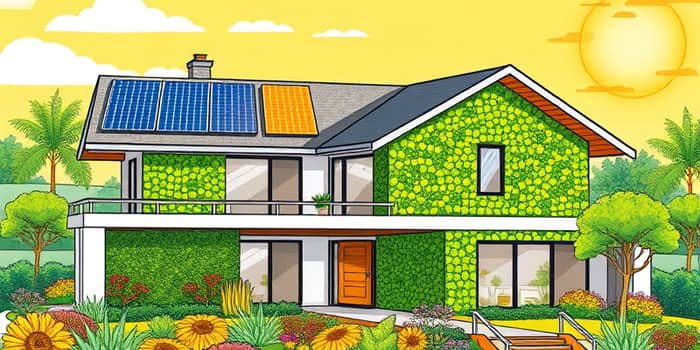
Eco-renovation is more than a trend—it’s a transformative approach that blends design, sustainability, and financial savvy. By embracing environmentally conscious upgrades, homeowners can elevate property value while curbing their carbon footprint.
From efficient heating systems to renewable energy readiness, the strategic choices you make today can yield lasting dividends for your wallet, your comfort, and the planet.
Investment in home renovations surged to a staggering $485 billion in 2024, up from $363 billion in 2020. Despite inflation and rising material costs, eco-friendly remodels continue to gain traction. Millennials are nearly three times more likely, and Gen Z almost twice as likely, than baby boomers to prioritize upgrades that enhance resale appeal.
Once niche, green homes now command significant attention in real estate listings. Keywords like “heat pump” and “carbon neutral” have spiked, reflecting a consumer base eager for both sustainability and efficiency. This shift illustrates how eco-friendly features are moving from specialized to mainstream.
Understanding the financial dynamics of eco-renovation requires a clear view of upfront costs versus long-term benefits. High-performance upgrades often carry premiums, but they deliver remarkable returns through energy savings, increased home value, and faster sales cycles.
These figures underscore how eco-upgrades can pay for themselves through energy savings and enhanced market appeal.
Certifications such as LEED and ENERGY STAR serve as powerful endorsements of a home’s performance. Properties with these labels often command a market premium, appealing to buyers who value quality and sustainability.
Listing terms like “carbon neutral” rose by 72% between 2022 and 2023, signaling that accredited green credentials are no longer niche—they’re expected.
Federal and local incentives can significantly offset the cost of eco-renovations. The Inflation Reduction Act, along with state and utility rebates, provides rebates, tax credits, and low-interest loans for a range of upgrades.
By stacking these incentives, homeowners can reduce their out-of-pocket expenses by thousands of dollars.
Eco-renovation delivers immediate environmental gains. Efficient appliances and renewable-ready infrastructure reduce household CO₂ emissions, easing pressure on public utilities and supporting climate goals.
Water-wise fixtures not only conserve a vital resource but also help communities facing droughts and water scarcity. As more homes adopt sustainable systems, the collective impact can shift regional energy demand curves, mitigating price volatility.
Beyond dollars and cents, eco-friendly materials and systems create healthier living spaces. Non-toxic paints, improved ventilation, and moisture-resistant insulation foster superior indoor air quality.
Zoned heating and cooling ensure consistent comfort year-round, while durable composite sidings and premium roofing materials reduce maintenance needs and repair costs over time.
By following these steps, homeowners can embark on a renovation journey that aligns environmental stewardship with economic benefit.
References





